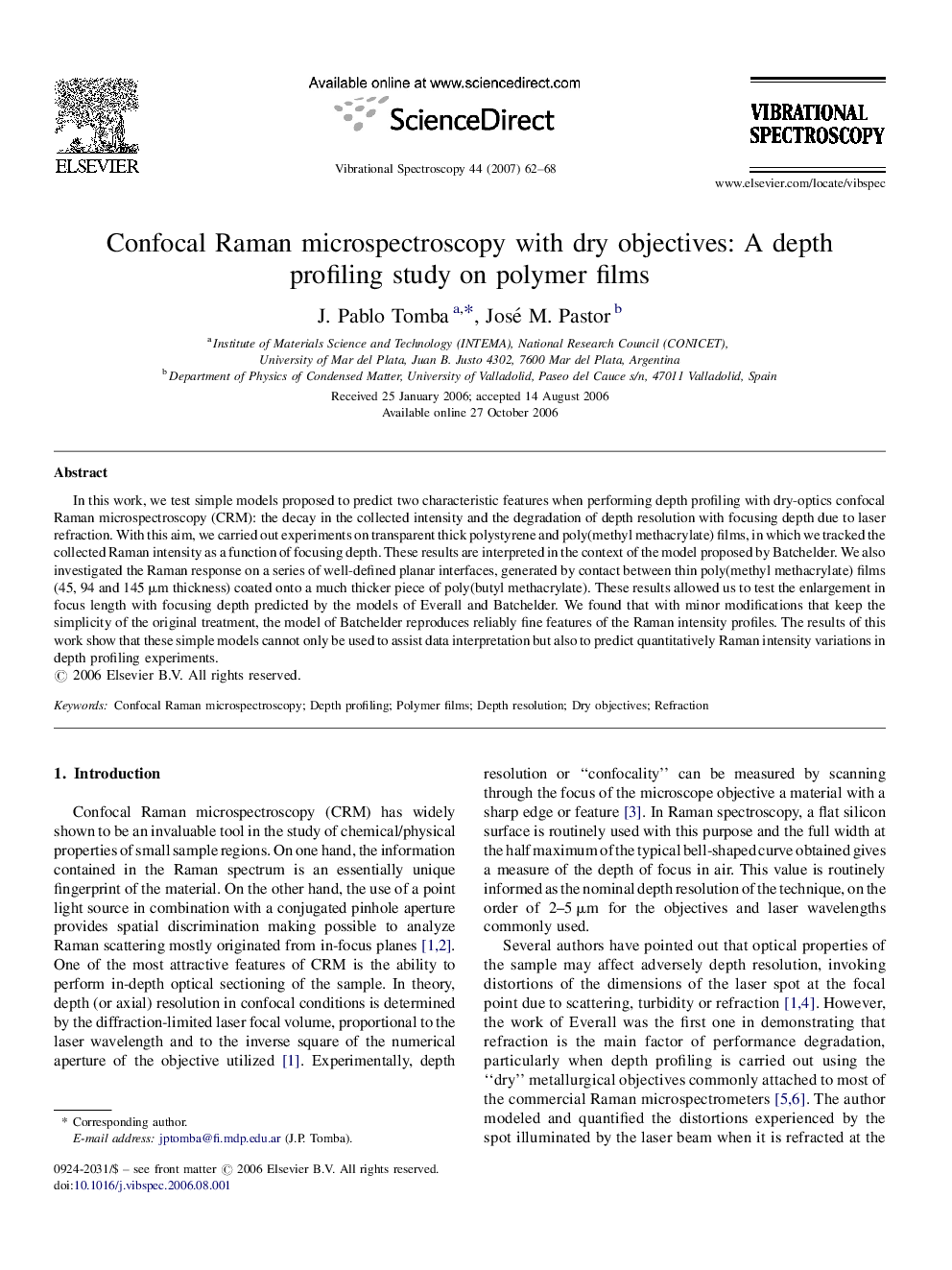| Article ID | Journal | Published Year | Pages | File Type |
|---|---|---|---|---|
| 1250982 | Vibrational Spectroscopy | 2007 | 7 Pages |
In this work, we test simple models proposed to predict two characteristic features when performing depth profiling with dry-optics confocal Raman microspectroscopy (CRM): the decay in the collected intensity and the degradation of depth resolution with focusing depth due to laser refraction. With this aim, we carried out experiments on transparent thick polystyrene and poly(methyl methacrylate) films, in which we tracked the collected Raman intensity as a function of focusing depth. These results are interpreted in the context of the model proposed by Batchelder. We also investigated the Raman response on a series of well-defined planar interfaces, generated by contact between thin poly(methyl methacrylate) films (45, 94 and 145 μm thickness) coated onto a much thicker piece of poly(butyl methacrylate). These results allowed us to test the enlargement in focus length with focusing depth predicted by the models of Everall and Batchelder. We found that with minor modifications that keep the simplicity of the original treatment, the model of Batchelder reproduces reliably fine features of the Raman intensity profiles. The results of this work show that these simple models cannot only be used to assist data interpretation but also to predict quantitatively Raman intensity variations in depth profiling experiments.
